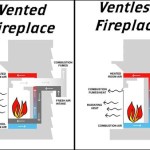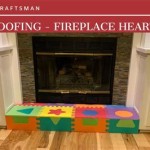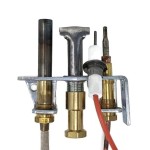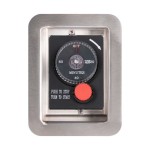Portable Fireplaces for Indoor Use: A Comprehensive Overview
Portable fireplaces designed for indoor use have gained considerable popularity as a convenient and aesthetically pleasing method of adding warmth and ambiance to various living spaces. These fireplaces offer an alternative to traditional wood-burning or gas fireplaces, providing flexibility in placement and often requiring minimal installation. This article delves into the different types of portable indoor fireplaces, their key features, safety considerations, and factors to contemplate before purchase.
The term "portable fireplace" encompasses several different technologies and fuel sources. Understanding these distinctions is essential for selecting a model that aligns with individual needs and preferences. Common types include electric fireplaces, gel fireplaces, and ethanol fireplaces. Each type possesses unique characteristics regarding heat output, fuel consumption, aesthetic appeal, and safety protocols.
Electric Fireplaces: Convenience and Versatility
Electric fireplaces are perhaps the most common type of portable indoor fireplace. They operate by utilizing electricity to generate heat. A heating element, usually a coil or infrared heater, warms the surrounding air, which is then circulated by a fan. The visual appeal is often enhanced by simulated flames, typically created using LED lights and mirrors to project a realistic flickering effect.
Key advantages of electric fireplaces include ease of use, safety, and versatility. They require no venting or chimney, making them suitable for apartments, condominiums, and homes without existing fireplace infrastructure. Many models feature adjustable heat settings, allowing for precise temperature control. The simulated flames can often be operated independently of the heating element, providing ambiance without generating heat, which is particularly useful during warmer months. Furthermore, electric fireplaces are generally considered safer than other types of portable fireplaces, as they do not produce open flames or release harmful emissions.
However, electrical fireplaces are limited by its dependence on a power outlet. It becomes a disadvantage during power outage. Aesthetics can also be a challenge. While simulations can be convincing, it is not the authentic feel of an open flame fireplace.
Gel Fireplaces: A Touch of Real Flame
Gel fireplaces utilize a specially formulated gel fuel, composed primarily of isopropyl alcohol, to create a real flame. The gel is typically packaged in canisters or cups, which are placed within the fireplace unit and ignited. The resulting flame produces heat and a crackling sound, mimicking the ambiance of a traditional wood-burning fireplace.
The primary appeal of gel fireplaces lies in their ability to produce a genuine flame without the need for a chimney or gas line. They offer a more realistic aesthetic than electric fireplaces, creating a captivating visual display. Gel fuel is relatively clean-burning, producing minimal smoke or soot. However, it is crucial to use only approved gel fuel specifically designed for fireplaces, as using other types of flammable liquids can be extremely dangerous. Ventilation is still recommended, although not as critical as with wood-burning fireplaces.
Gel fuel can be expensive, and the heat output is generally lower than that of electric or ethanol fireplaces. Also, there is a potential burn risk as the canister needs to be changed after the fuel runs out. This can be challenge if the fuel runs out in the middle of the use. Also, while it is clean burning, it can release carbon monoxide. Ensure proper ventilation.
Ethanol Fireplaces: Modern Design and Clean Burning
Ethanol fireplaces utilize bioethanol, a renewable fuel derived from plant-based sources, to generate heat and flame. Similar to gel fireplaces, they do not require a chimney or venting, making them suitable for a variety of indoor settings. Ethanol fireplaces often feature sleek, modern designs, making them a popular choice for contemporary homes.
One of the main advantages of ethanol fireplaces is their clean-burning nature. When burned correctly, ethanol produces primarily carbon dioxide and water vapor, minimizing indoor air pollution. The flame produced is genuine and visually appealing, adding a touch of elegance to any room. Ethanol fireplaces are available in a wide range of styles and sizes, from tabletop models to larger, freestanding units.
Safety remains a paramount concern with ethanol fireplaces. It is essential to use only denatured ethanol designed specifically for fireplaces. Never use gasoline or other flammable liquids, as they can cause explosions or toxic fumes. Refilling the fuel reservoir should only be done when the fireplace is completely cool. Proper ventilation is crucial to prevent the buildup of carbon dioxide. Ethanol fuel can also be more costly than electricity.
Evaluating Safety Considerations
Regardless of the type of portable indoor fireplace chosen, safety should be the foremost consideration. All models, whether electric, gel, or ethanol, pose potential risks if not used correctly. Selecting a fireplace that meets relevant safety standards, such as those set by Underwriters Laboratories (UL) or other recognized testing organizations, is paramount. Always follow the manufacturer's instructions carefully, including guidelines for fuel usage, ventilation, and placement.
Portable fireplaces should be kept away from flammable materials, such as curtains, furniture, and bedding. Never leave a burning fireplace unattended, and ensure that children and pets are kept at a safe distance. It is also advisable to install carbon monoxide detectors in the home, particularly when using gel or ethanol fireplaces, as these fuels can produce carbon monoxide even when burned efficiently. Regularly inspect the fireplace for any signs of damage or malfunction, and address any issues promptly.
Factors to Consider Before Purchase
Before investing in a portable indoor fireplace, several factors should be carefully assessed. The size of the room in which the fireplace will be used is essential in determining the appropriate heat output. A smaller space may only require a low-wattage electric fireplace, while a larger room may benefit from a gel or ethanol fireplace with a higher BTU rating.
The intended use of the fireplace should also be considered. If the primary goal is to provide supplemental heat, an electric fireplace with adjustable heat settings may be the most practical choice. If the focus is on creating ambiance and visual appeal, a gel or ethanol fireplace may be preferred. The aesthetic design of the fireplace should complement the existing décor of the room.
Budget is another essential consideration. Electric fireplaces are generally the most affordable option, followed by gel fireplaces, and then ethanol fireplaces. The ongoing cost of fuel for gel and ethanol fireplaces should also be factored into the overall expense. Finally, consider the ease of maintenance and cleaning. Electric fireplaces require minimal maintenance, while gel and ethanol fireplaces may require periodic cleaning to remove soot or residue.

10 Portable Fireplaces For Petite Places Fireplace Indoor Design

10 Unique Portable Fireplaces Modern Blaze

Indoor Electric Fireplaces Heaters Real Flame

1400w Electric Fireplace Heater 14 Freestanding Stove Portable Space With Fake Flame Overheat Protection For Indoor Use Small Com

Tabletop Fire Pit Rectangular Indoor Or Outdoor Ventless Fireplace Clean Burning Portable Heat With 360 View By Northwest Black Target

12 Cozy Portable Fireplace Ideas For The Modern Home Decoist

We Love These New Indoor Smokeless Fireplaces Goodhomes

The Best Indoor Ventless Fireplaces For Your Home Or Apartment

Indoor Electric Fireplaces Heaters Real Flame

1400w Electric Fireplace Heater 14 Freestanding Stove With Realistic Flame Portable Space For Home Indoor Small Use Com
Related Posts








